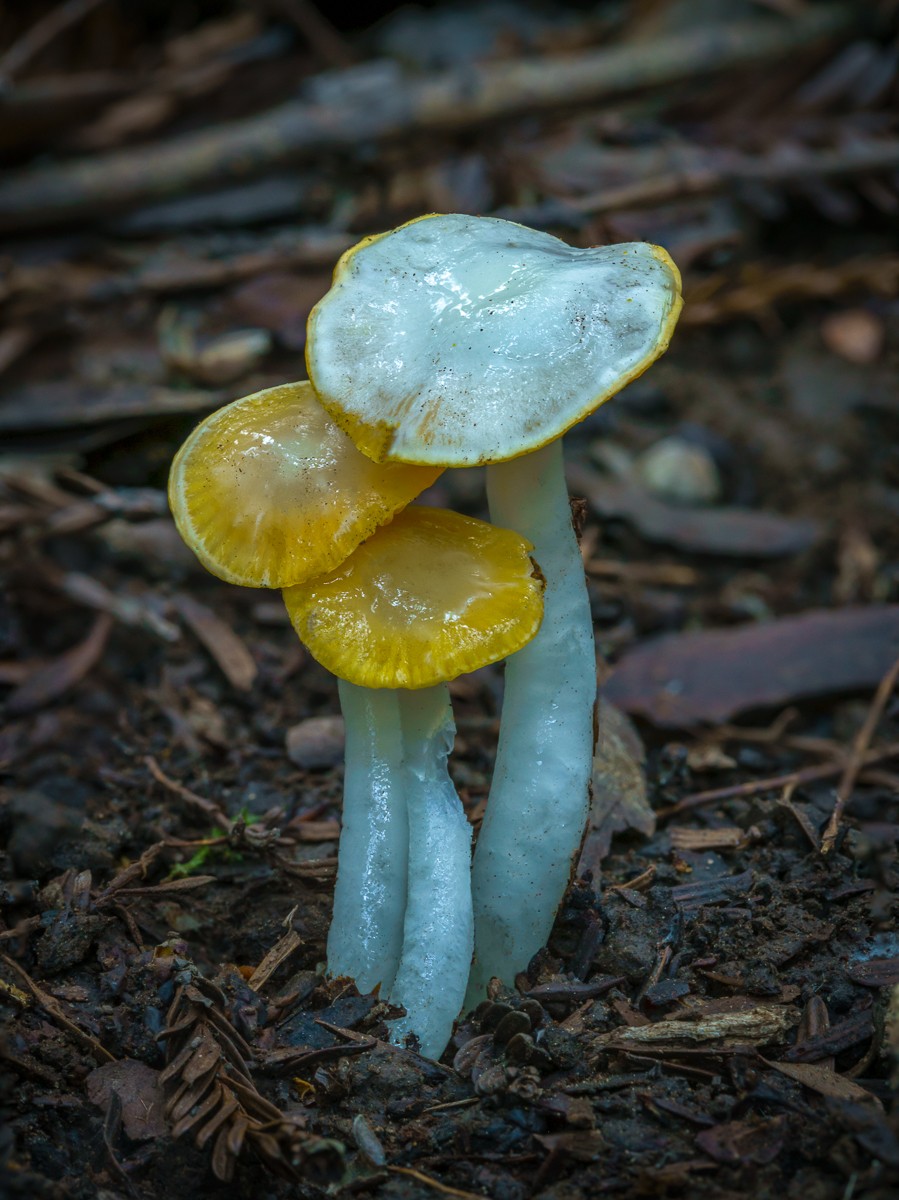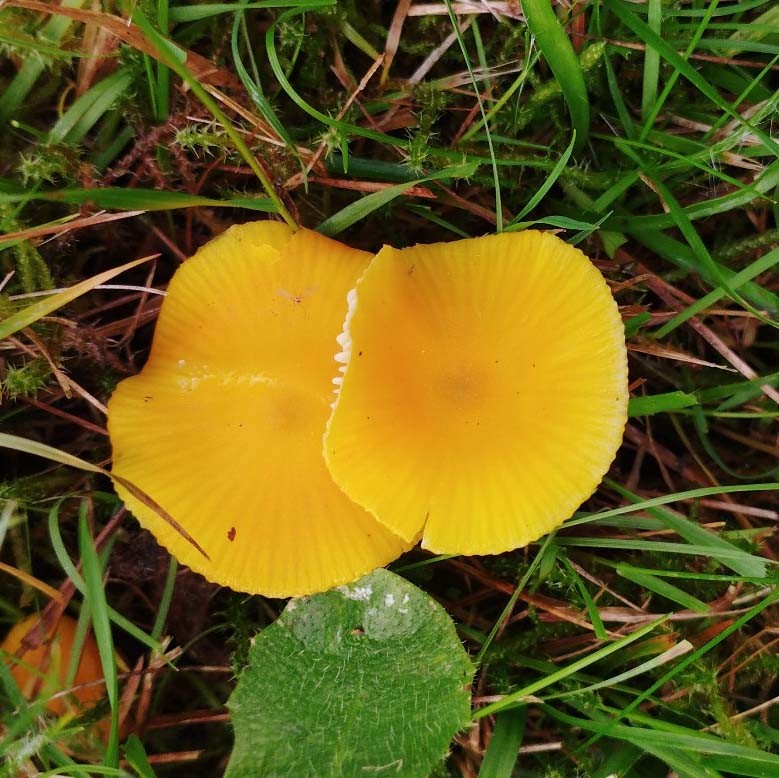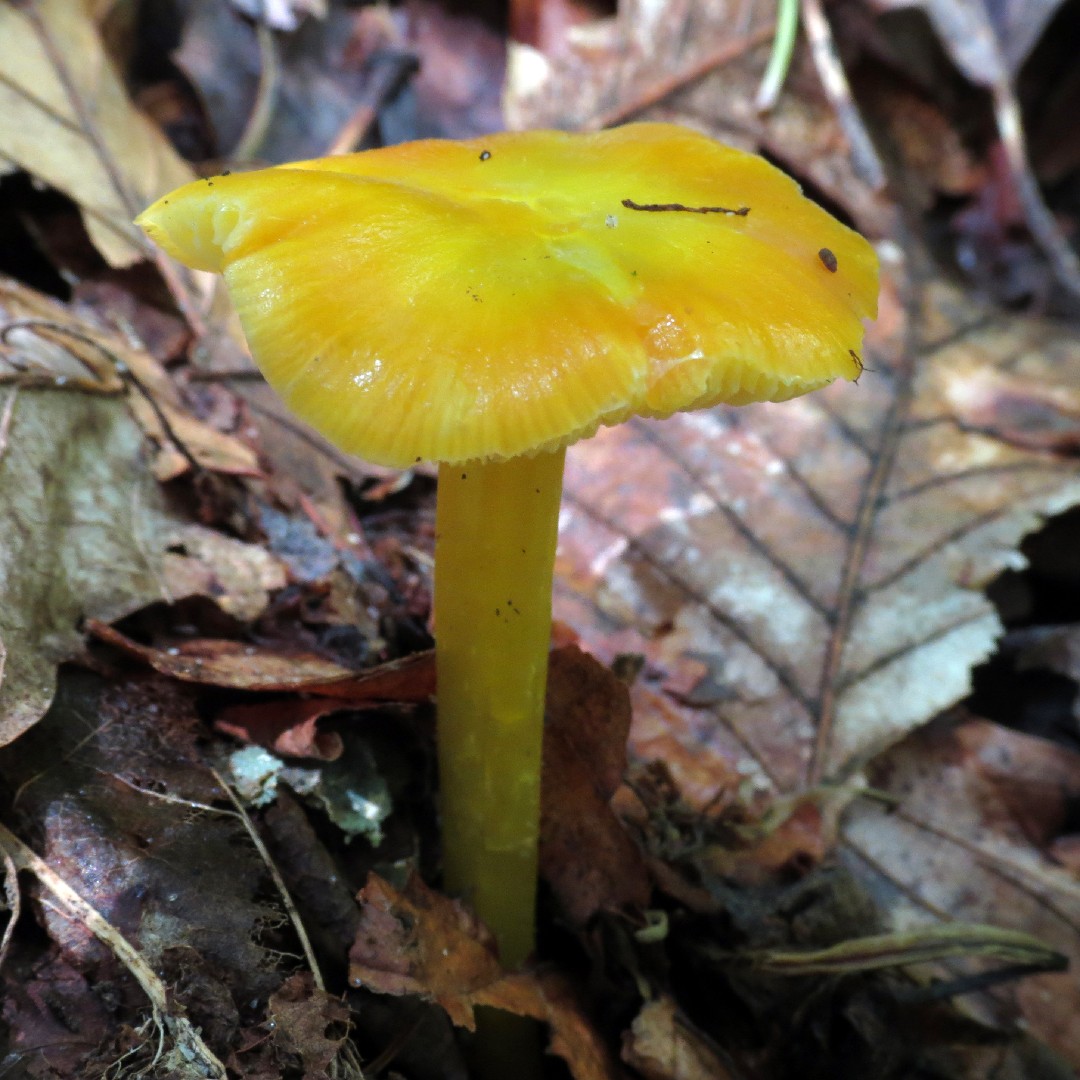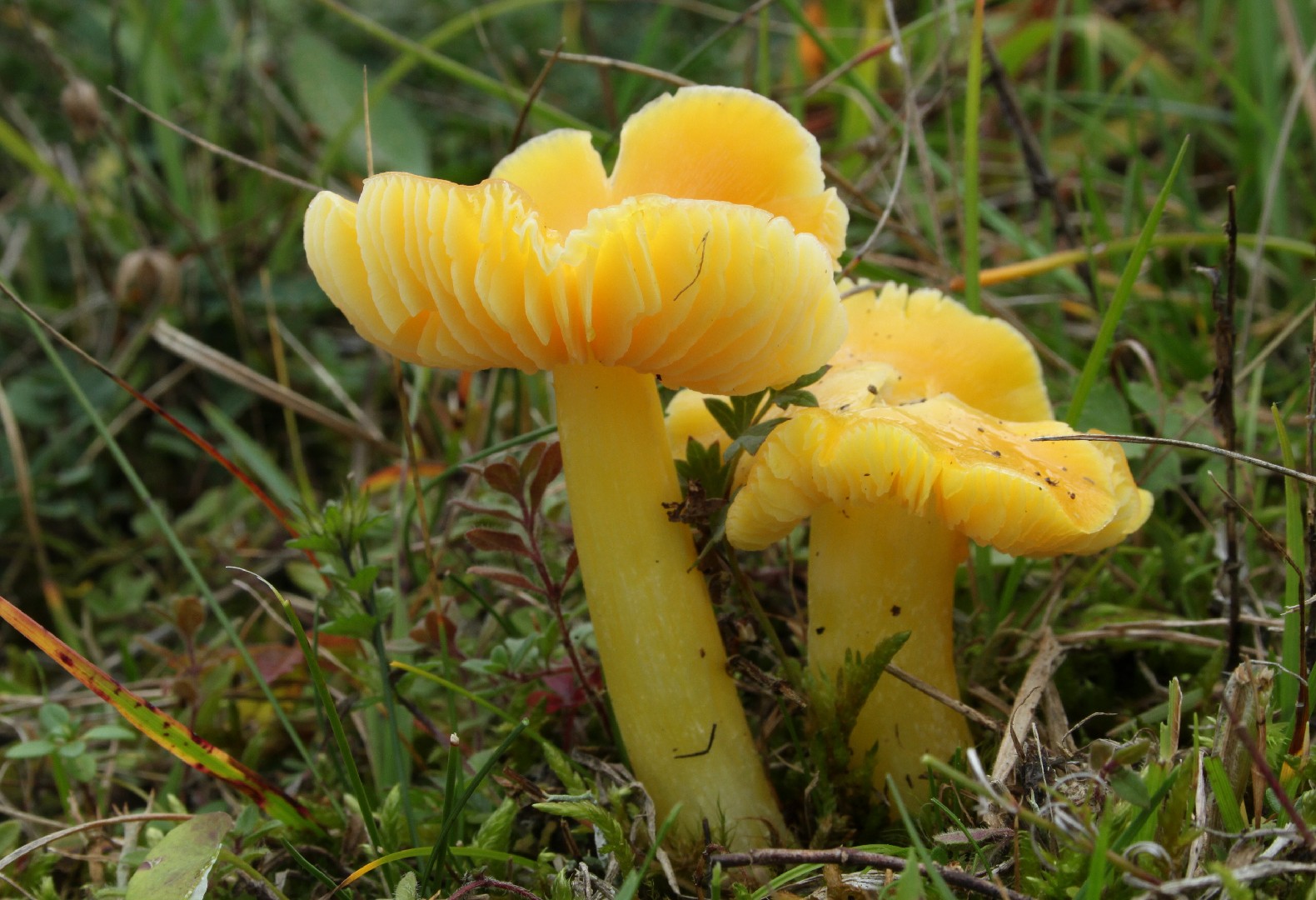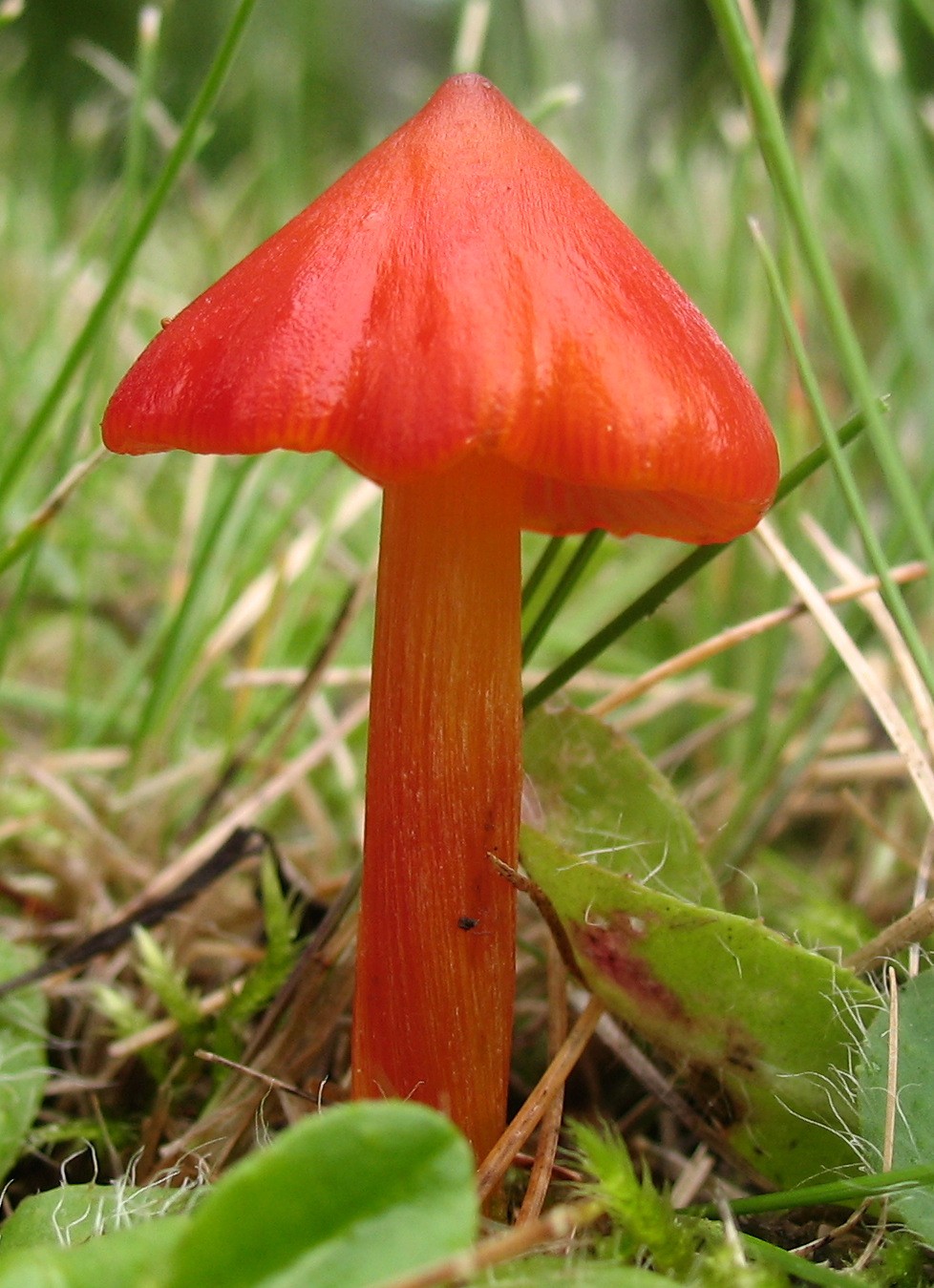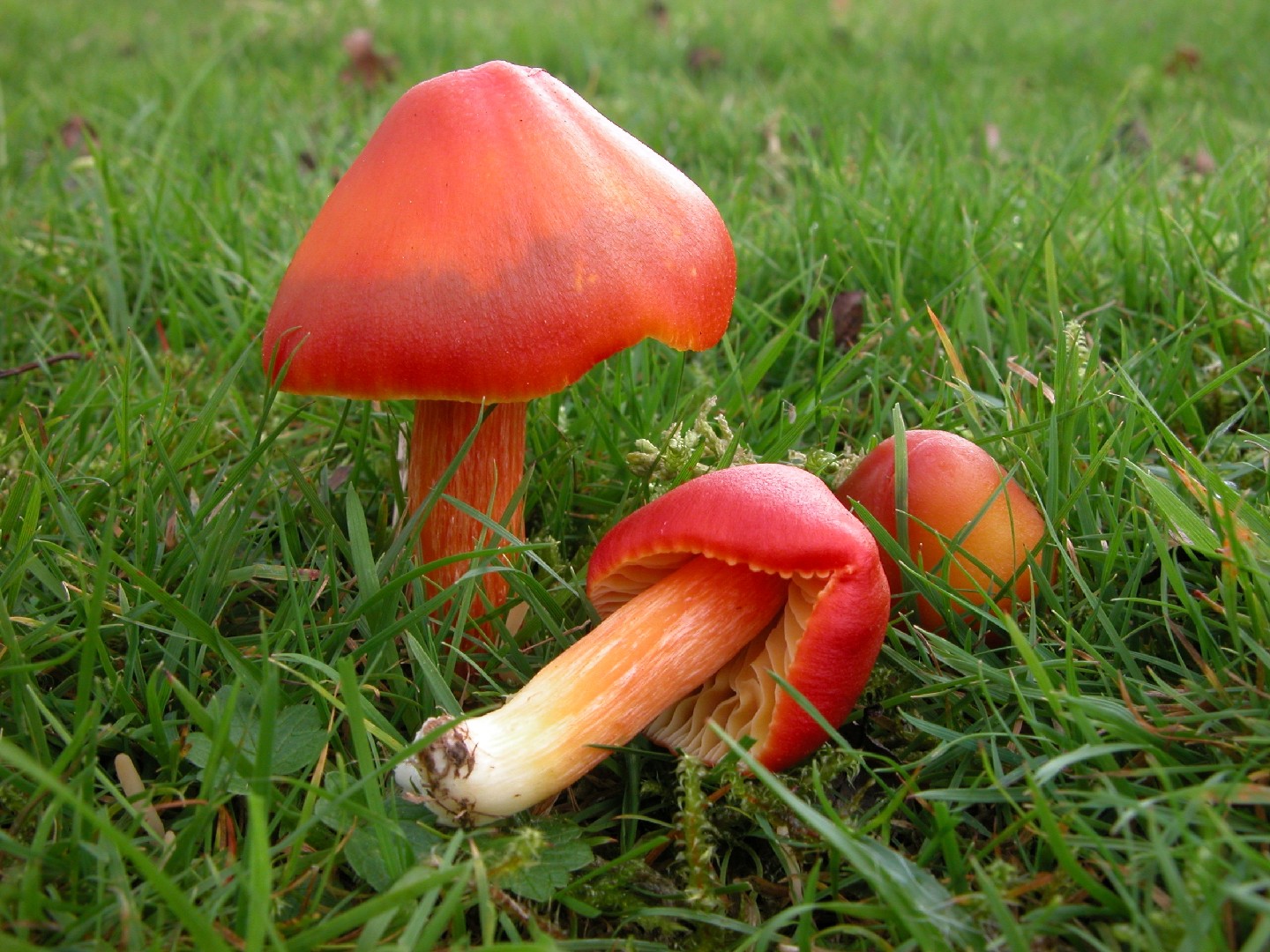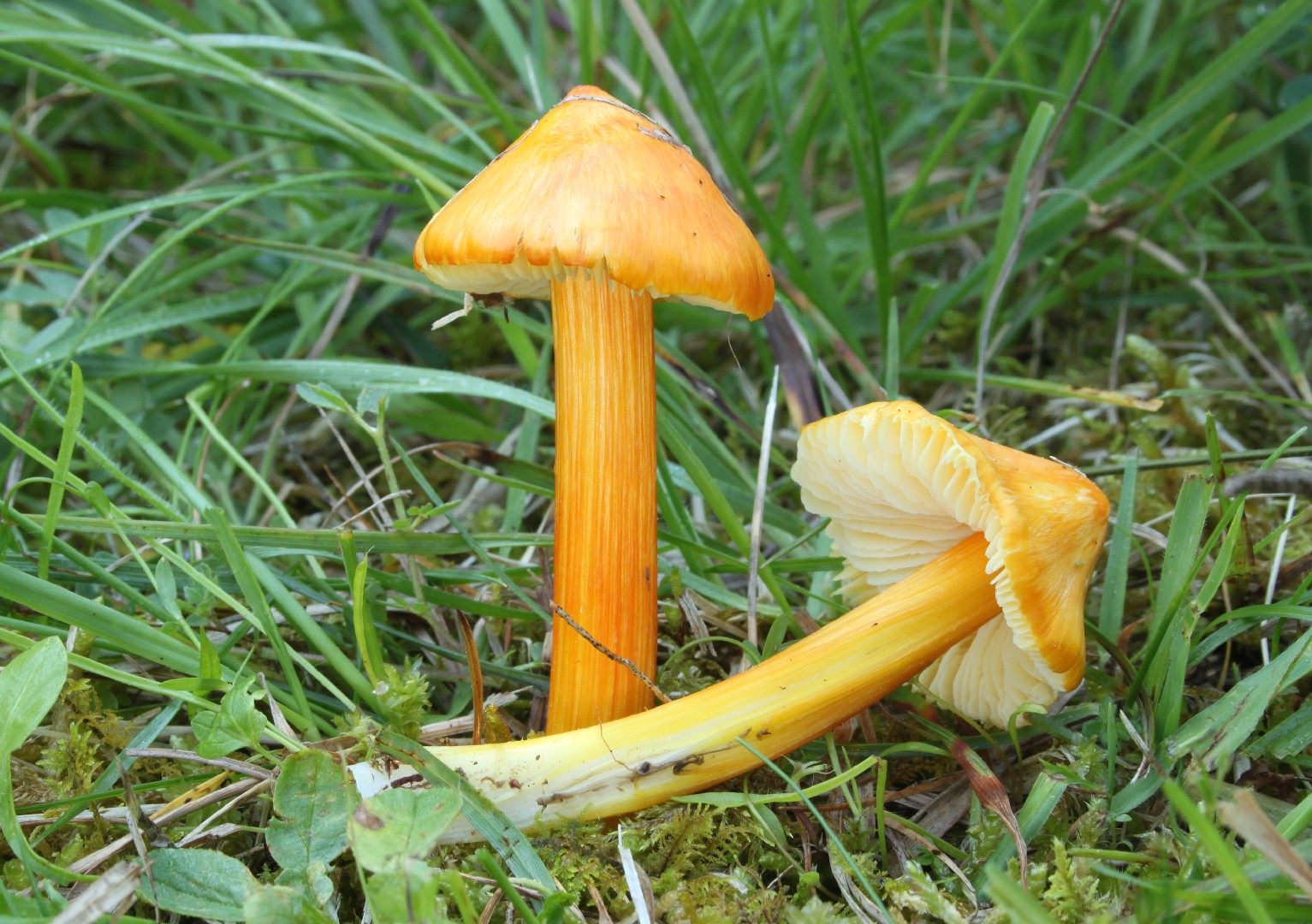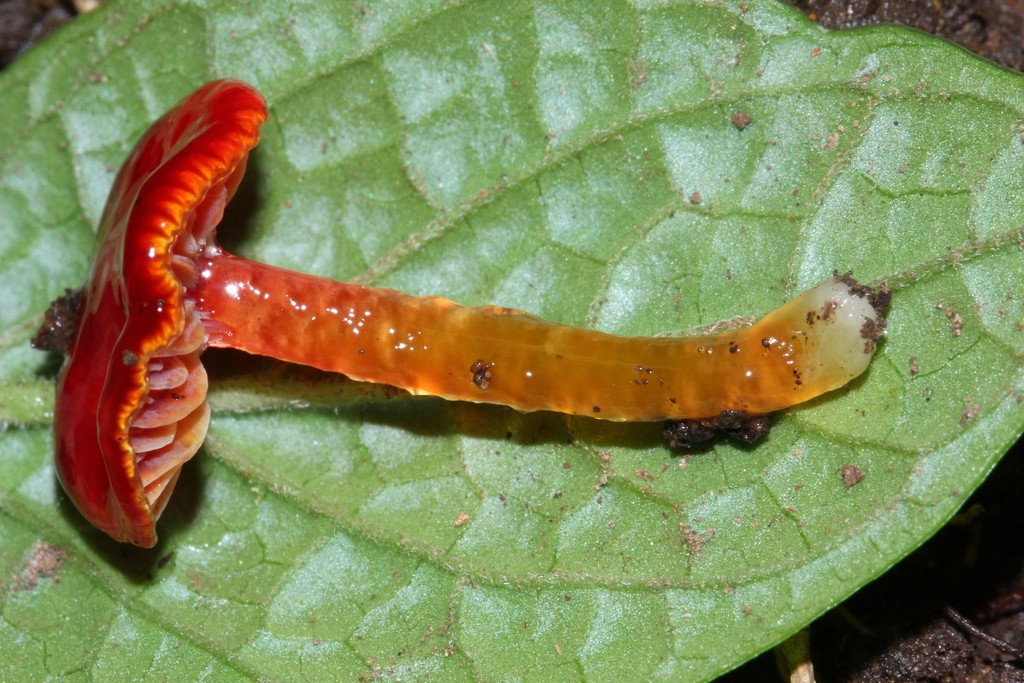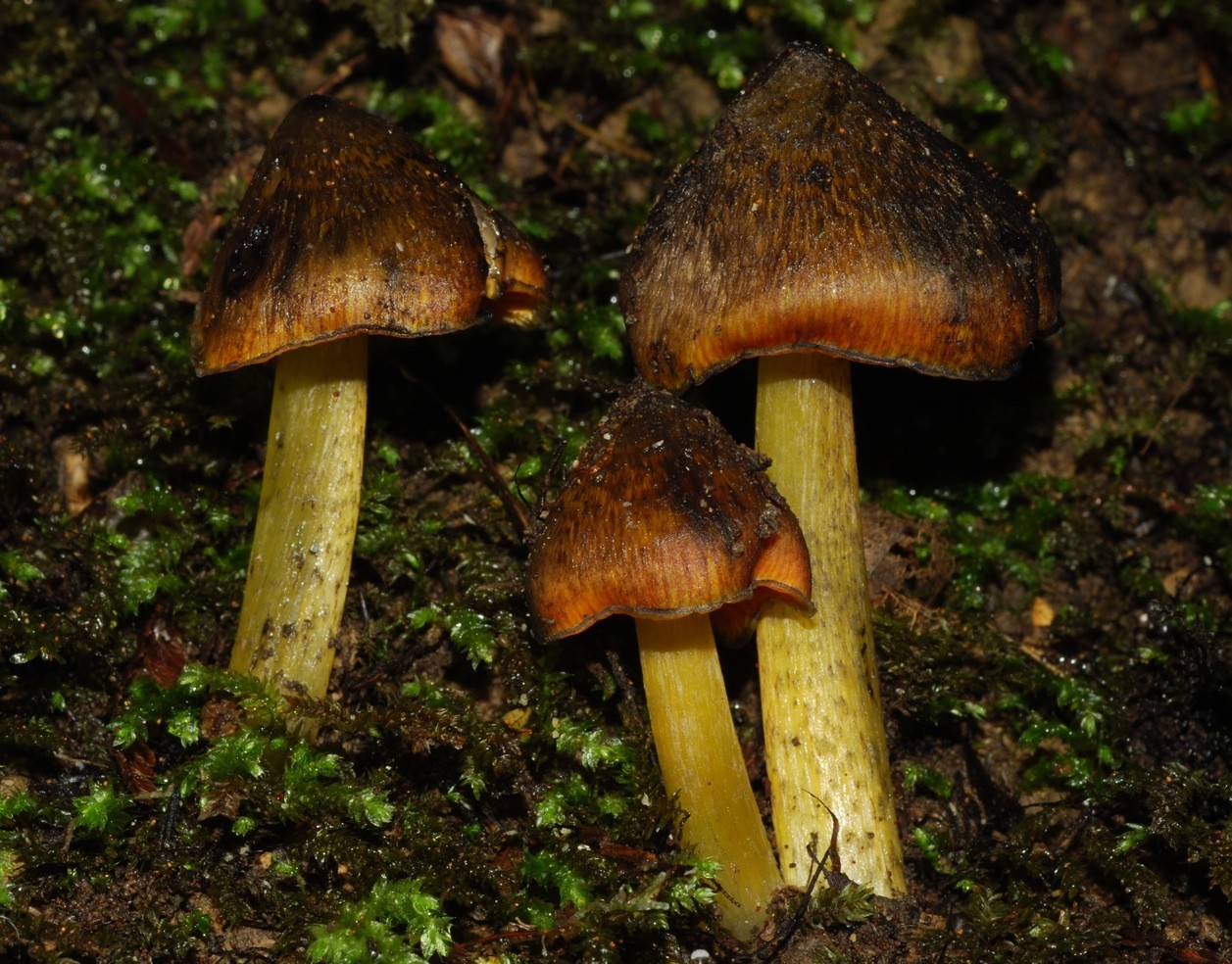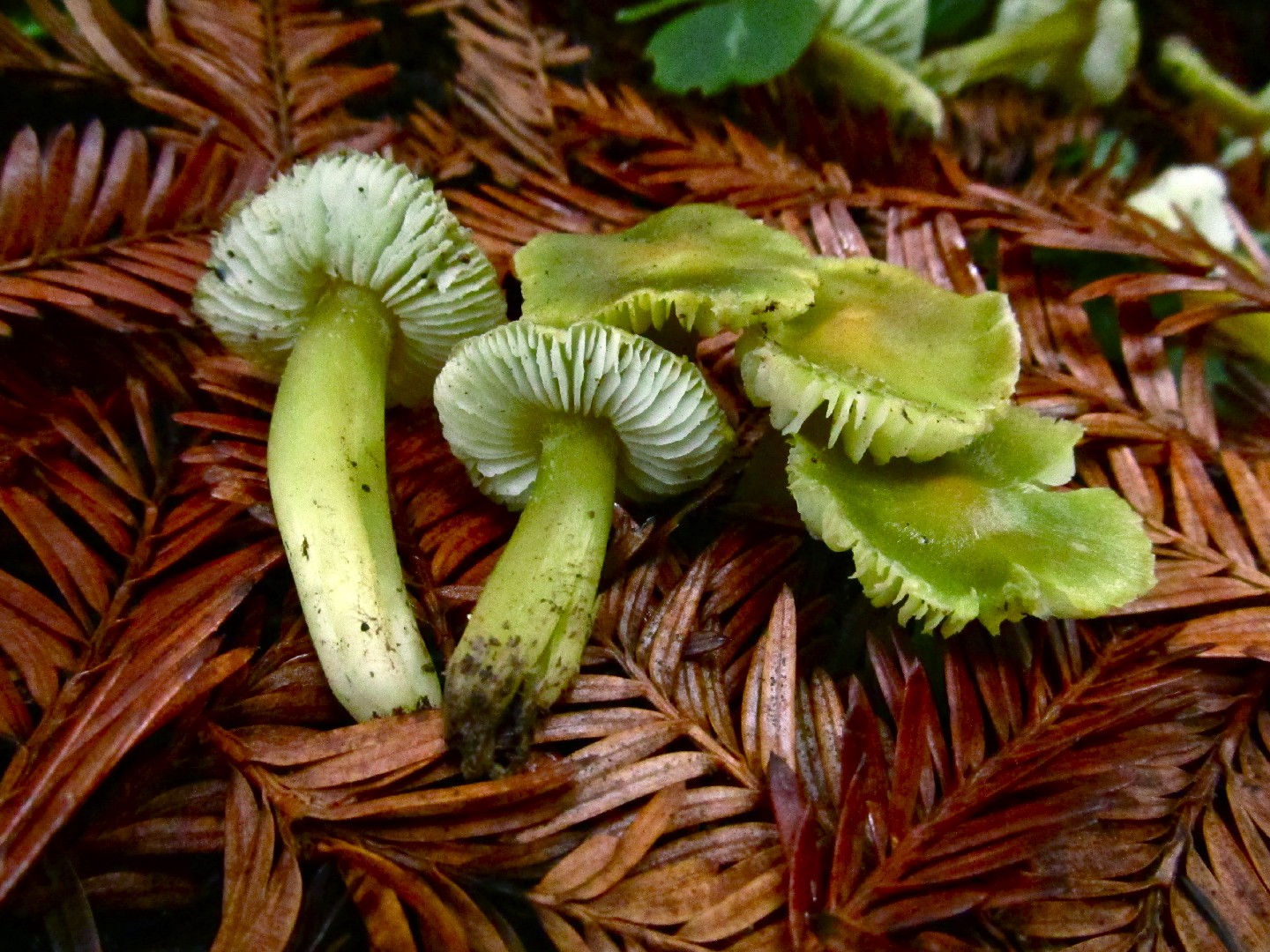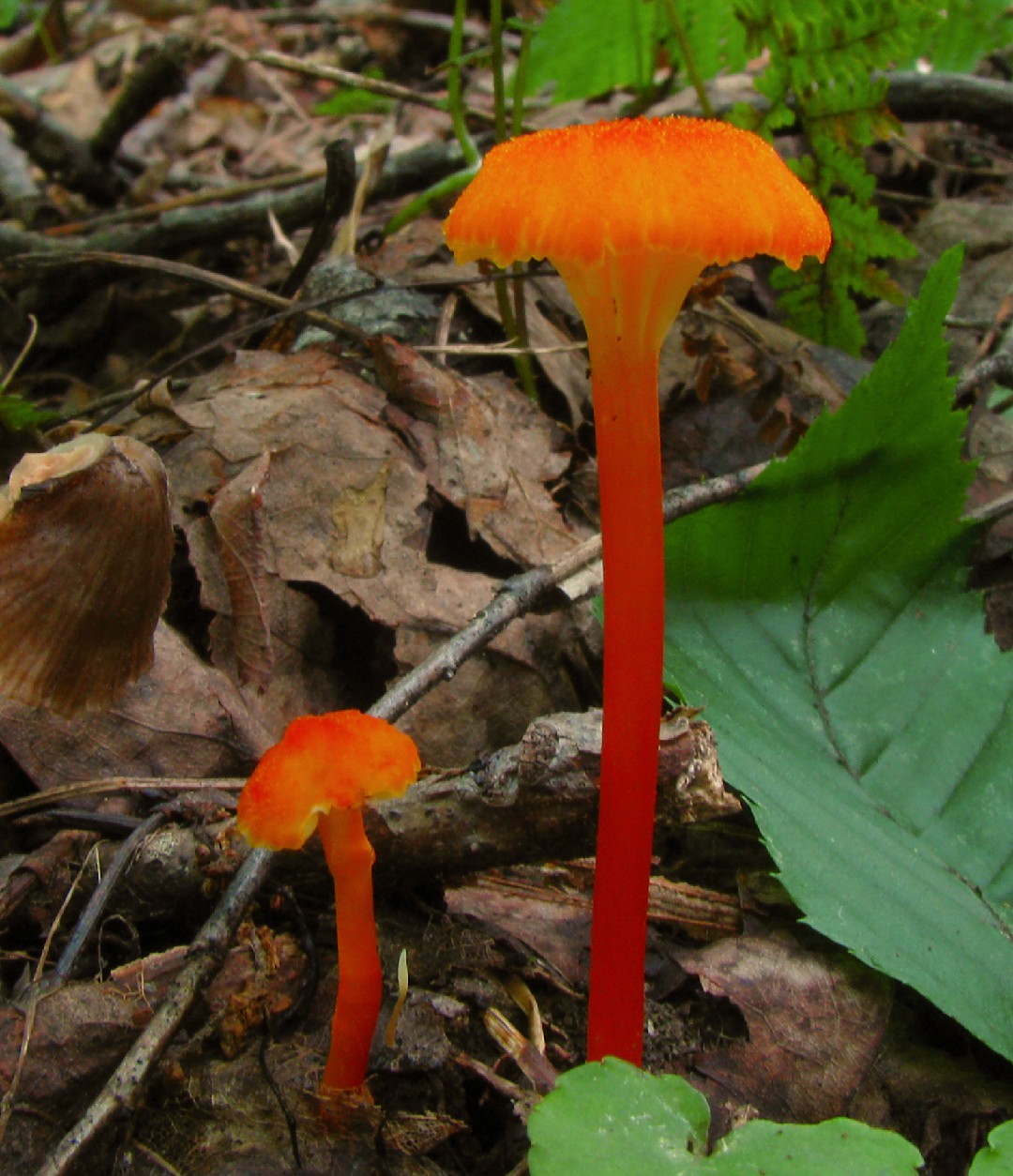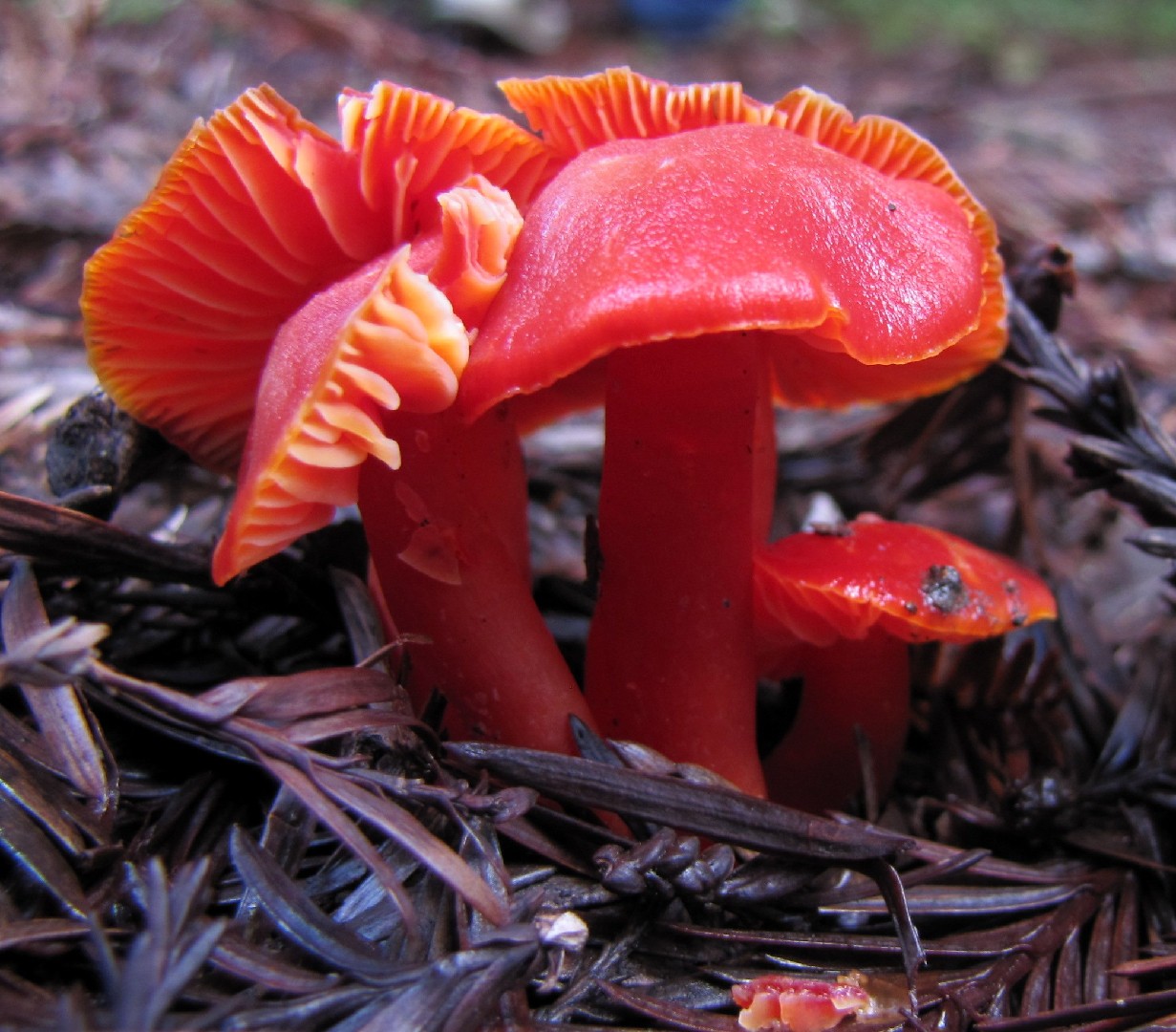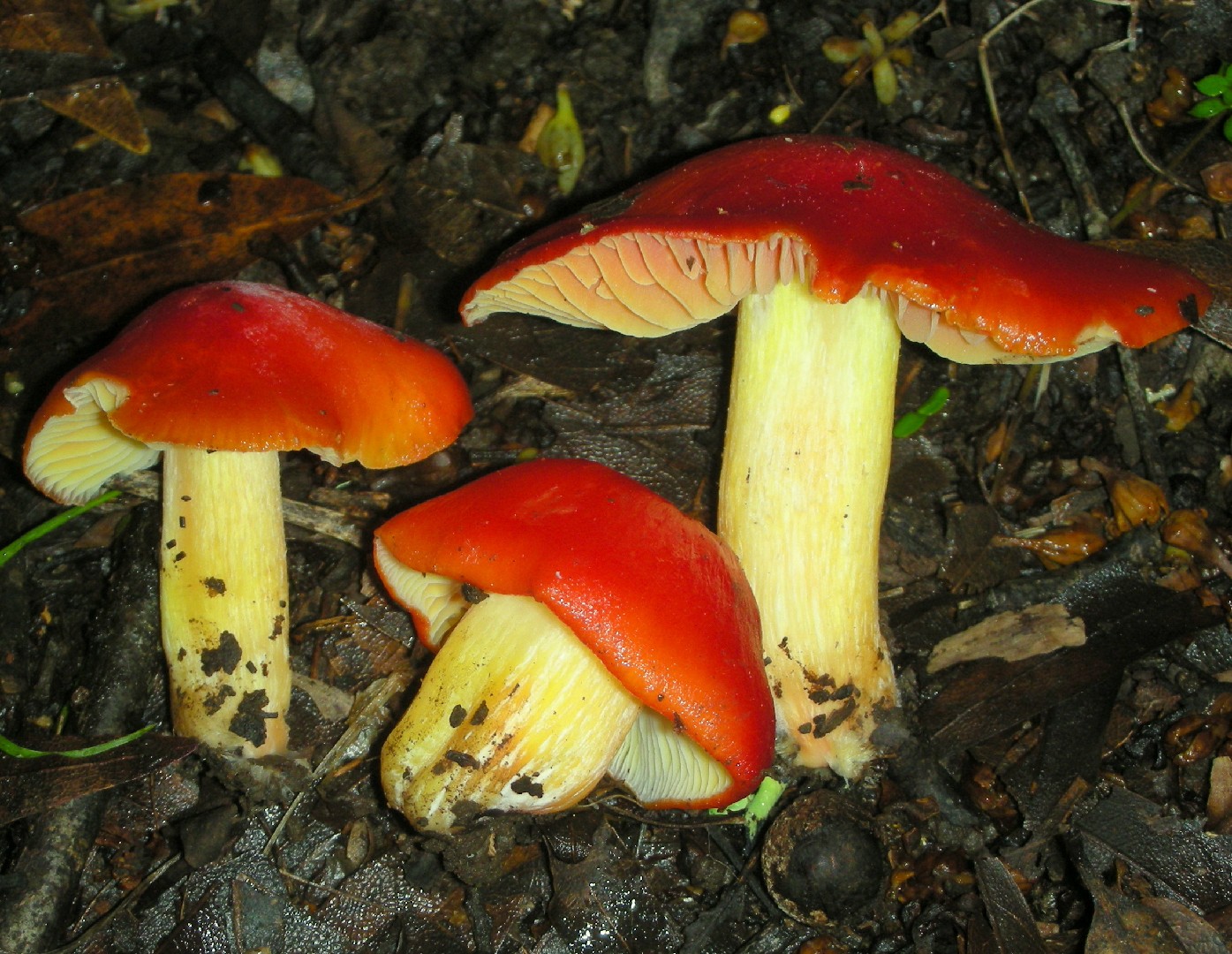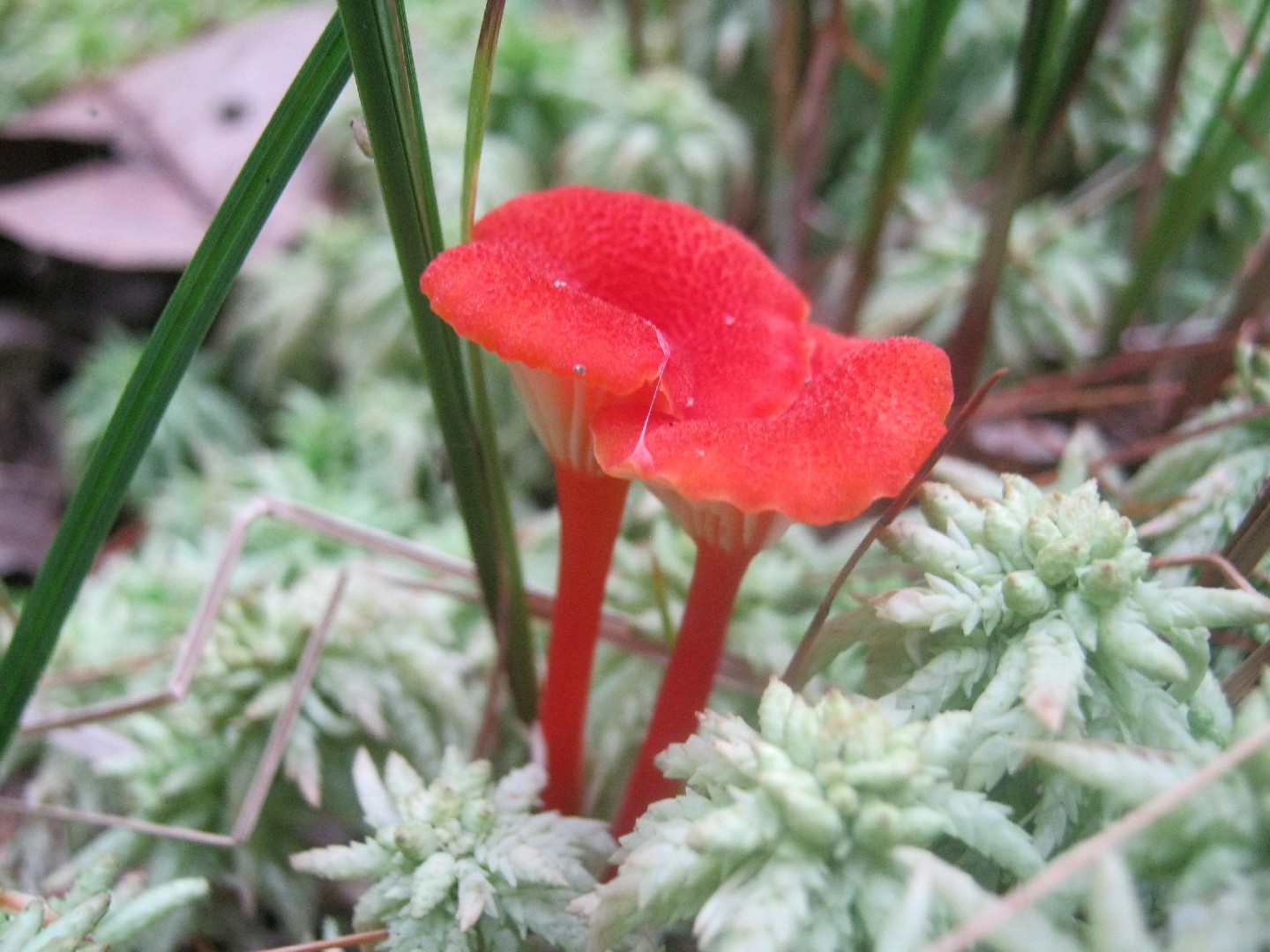Waxcaps
Scientific name: Hygrocybe
Waxcaps
Scientific name: Hygrocybe
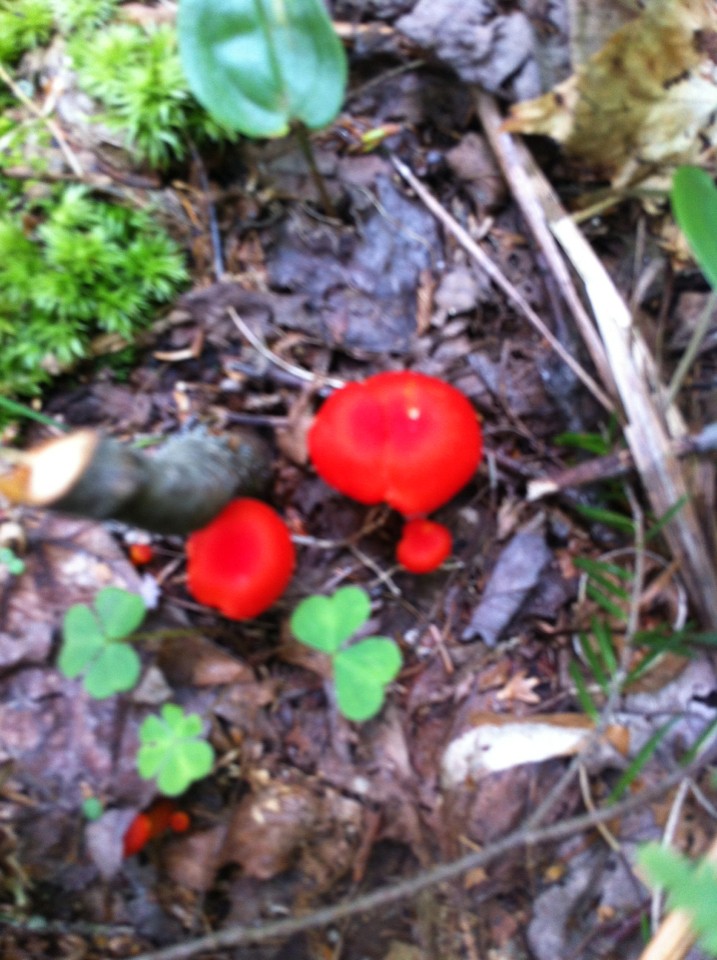 Photo By Charlie Hohn , used under CC-BY-4.0 /Cropped and compressed from original
Photo By Charlie Hohn , used under CC-BY-4.0 /Cropped and compressed from original Description
Waxcaps are often recognized for their vibrant, waxy caps that come in a variety of striking colors, including red, yellow, and green. They typically grow in nutrient-poor grasslands and mossy environments, making them an indicator of ecological health. Many species of waxcaps are known for their ability to thrive in undisturbed, low-fertility habitats, showcasing their fascinating resilience and adaptability.
